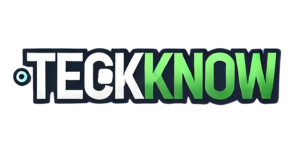JAKARTA, teckknow.com – Data Science: Uncovering Insights from Big Data is honestly something I used to think was only for people with math skills or a computer background. But nope, once I dived in, it blew my mind how anyone can uncover epic insights with the right approach—personal experience talking here.
When I first encountered a 10-gigabyte dataset of customer transactions, I felt overwhelmed. Yet, diving into the world of Data Science transformed that anxiety into excitement. Data Science isn’t just a buzzword—it’s a multidisciplinary approach that uncovers hidden patterns, drives decision-making, and ultimately reshapes how we perceive problems in every field.
What Is Data Science?
At its core, Data Science combines statistics, computer science, and domain expertise to extract knowledge from data. It encompasses the entire lifecycle:
- Data Collection & Storage
- Data Cleaning & Preprocessing
- Exploratory Data Analysis (EDA)
- Modeling & Machine Learning
- Interpretation & Deployment
Each stage builds upon the last, turning raw data into actionable insights.
My Personal Journey with Big Data
- First Project – Web Traffic Analysis: I started by analyzing server logs to identify peak usage times. Cleaning malformed entries taught me the pivotal lesson that “garbage in, garbage out” isn’t just a phrase—it’s reality.
- Machine Learning Breakthrough: Implementing a simple regression model to predict monthly sales shifted my mindset from descriptive reporting to predictive forecasting. Witnessing my model outperform Excel forecasts by 30% was a watershed moment.
- Visualization Epiphany: Crafting interactive dashboards with Plotly and Tableau revealed that the best insights often come from the stories visuals tell. Suddenly, stakeholders who glazed over spreadsheets were asking questions and exploring trends on their own.
Core Components of Data Science
1. Data Cleaning & Preprocessing
- Handling missing values, outliers, and inconsistent formats
- Encoding categorical variables and scaling numerical features
2. Exploratory Data Analysis (EDA)
- Summary statistics (mean, median, Variance)
- Visual tools: Histograms, box plots, scatter Matrices
- Identifying correlations and feature importance
3. Modeling & Machine Learning
- Supervised learning: Regression, Classification
- Unsupervised learning: Clustering, Dimensionality reduction
- Evaluation metrics: accuracy, Precision, recall, F1 score
4. Interpretation & Communication
- Translating model outputs into business insights
- Creating reports and visualizations for non-technical audiences
- Ensuring reproducibility with notebooks and pipelines
Real-World Applications That Inspired Me
- Healthcare Analytics: Predicting patient readmission reduced hospital costs and improved patient care.
- Fraud Detection: Anomaly detection models flagged suspicious transactions in real time, safeguarding millions in revenue.
- Customer Segmentation: Clustering algorithms tailored marketing campaigns, boosting conversion rates by 20%.
- IoT & Sensor Data: Time-series analysis on manufacturing equipment forecasts maintenance needs, minimizing downtime.
Challenges and Ethical Considerations
- Data Privacy: Handling personally identifiable information demands strict compliance with regulations like GDPR.
- Bias in Data: Training models on historical data can perpetuate systemic biases unless carefully audited.
- Model Interpretability: Complex models (e.g., deep neural networks) often act as “black boxes,” requiring techniques like SHAP values to explain predictions.
- Scalability: Big Data platforms (Hadoop, Spark) are essential to process massive volumes, but they introduce operational complexity.
The Future of Data Science
- Automated Machine Learning (AutoML): Streamlining model selection and hyperparameter tuning for faster prototyping.
- Edge Analytics: Pushing inference to edge devices for real-time decision-making in IoT applications.
- Augmented Analytics: Embedding AI assistants into BI tools to surface insights proactively.
- Responsible AI: Establishing frameworks for fairness, accountability, and transparency in data-driven systems.
Conclusion
My journey through Data Science—from wrestling with messy logs to building predictive models—completely changed how I tackle problems. Beyond the technical skills, I gained an analytical mindset: always questioning, always validating, and always seeking the story behind the numbers. In a world awash with data, Data Science empowers us to transform noise into knowledge and insight into impact.
So if you’re curious about Data Science: Uncovering Insights from Big Data, jump in, experiment, and share your findings. You’ll be surprised by how addicting it gets!
Boost Your Proficiency: Learn from Our Expertise on Technology
Don’t Miss Our Latest Article on Artificial Neural Networks: The Architecture of Machine Intelligence!
